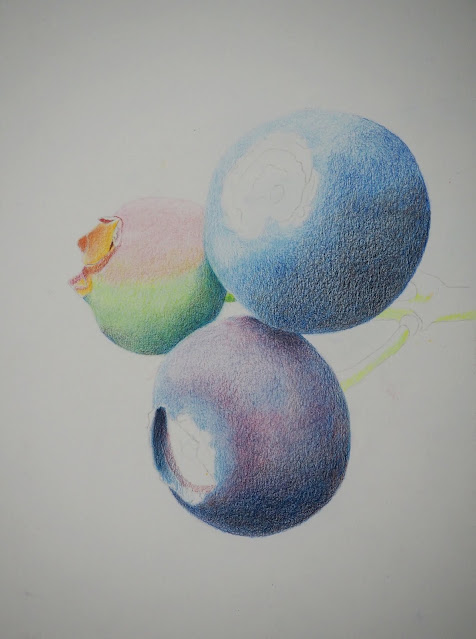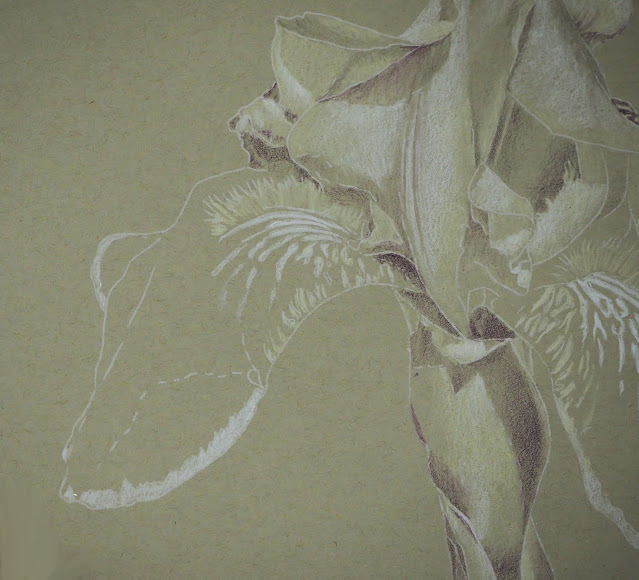This is how it looked at the end of the last class.
Before the second class I worked some on the left side and top of the stem. I used all of the same colors - white, black grape, cream, 50% warm gray, scarlet lake (warm red), Crimson lake, pomegranate, Spanish orange (warm yellow) lemon yellow (cool yellow), grass green. I added canary yellow and yellow chartreuse.
I layered the darks and started working on some details. It's mostly about the values, the lights and darks. Values create the form, they are part of the structure. Color is about beauty and expression.
Using the same list of colors with the addition of black to deepen the dark on the right petal and canary yellow to add into the yellow fringe, I worked on the right petal in class showing the layers of color and the addition of details.
Using the same colors, with the addition of yellow chartreuse, I worked on the stem.
I also worked on the top light petals starting the folds and the wrinkles. I used the same colors as last class, with the addition of canary yellow and light umber (easier than mixing the brown). And I still need to work on the concave square medium dark area I talked about in class. I will work around it first and then study it to see what, if anything, it still needs in order to be pushed back. Sometimes the problem area becomes solved when you put in the items around it (and sometimes not...).
This process is a matter of gently layering the colors to build the values, darks and the lights, adding color to express your beautiful self.


















